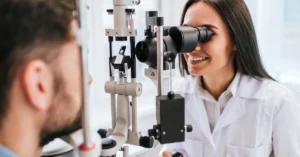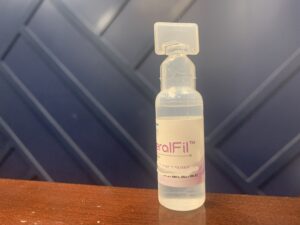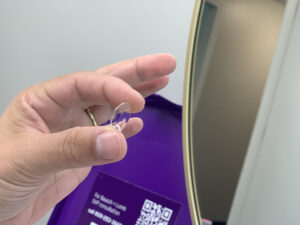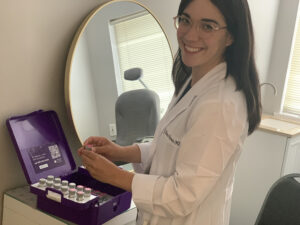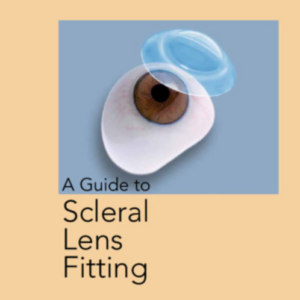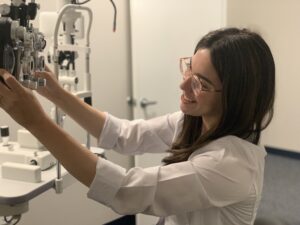Scleral Lens Overview
Scleral contact lenses are a specialized type of contact lens that offer unique benefits for individuals with certain eye conditions. Understanding the basics of Scleral Lens Cost, who can benefit from them, and the importance of a proper fit is crucial for those considering this option.
Understanding Scleral Contact Lenses
Scleral contact lenses are larger in diameter compared to traditional contact lenses. They vault over the cornea and rest on the sclera, the white part of the eye. The lens creates a tear-filled chamber between the lens and the cornea, providing comfort and promoting better vision. This design makes them suitable for individuals with conditions such as keratoconus, extreme dry eyes, and those who have undergone Radial Keratotomy (RK) surgery.
Scleral lenses offer several advantages over other types of contact lenses. The tear-filled chamber between the lens and the cornea acts as a protective barrier, providing relief for dry eyes and reducing discomfort caused by friction. Additionally, the larger size and custom fitting of scleral lenses allow for better stability on the eye, reducing lens movement and providing clearer vision.
Who Benefits from Scleral Lenses
Scleral lenses are particularly beneficial for individuals with specific eye conditions. These include:
Keratoconus:
Scleral lenses can help correct the irregular shape of the cornea caused by keratoconus, providing improved vision and comfort.
Extreme Dry Eyes:
Scleral lenses can help retain moisture on the ocular surface, providing relief for individuals with severe dry eyes who have not found success with other treatment options.
Post RK Surgery:
Scleral lenses can help individuals who have undergone Radial Keratotomy (RK) surgery achieve clearer vision by compensating for the changes in corneal shape caused by the procedure.
It’s important to consult with an eye care professional to determine if scleral lenses are suitable for your specific eye condition. A professional fitting is necessary to ensure the lenses are properly customized for your eyes and provide optimal visual and comfort benefits.
The Importance of Proper Fit
Achieving a proper fit is essential when it comes to scleral lenses. Each person’s eyes have unique characteristics, and a precise fit is necessary to ensure the lenses align correctly on the sclera and provide optimal vision correction.
During a scleral lens fitting, your eye care professional will measure the size and shape of your eyes, ensuring that the lenses are tailored to your specific needs. They will also assess the tear film and evaluate the lens movement and centration to confirm a proper fit. It’s crucial to follow the instructions provided by your eye care professional for scleral lens insertion and removal, as well as for cleaning and care using the appropriate scleral lens solution and scleral lens cleaner.
By investing in a proper fit, individuals can experience improved visual acuity and increased comfort, making scleral lenses an excellent option for those with specific eye conditions.
To learn more about the fitting process and find a professional near you, visit our article on scleral lens fitting.
Factors Affecting Scleral Lens Cost
When considering the cost of scleral lenses, it’s important to understand the various factors that can influence the overall price. These factors include professional fees and services, lens material and design, and additional customizations and enhancements.
Professional Fees and Services
One of the key components contributing to the cost of scleral lenses is the professional fees charged by eye care practitioners. These fees typically cover the comprehensive evaluation, fitting process, and ongoing follow-up appointments. The expertise and experience of the practitioner play a vital role in ensuring the proper fit and optimal visual outcomes with scleral lenses.
The complexity of the patient’s condition, such as keratoconus, extreme dry eyes, or post-RK surgery, may require additional time and expertise from the eye care professional. It’s essential to consider the value of the services provided by the practitioner when assessing the overall cost of scleral lenses.
Lens Material and Design
The material and design of the scleral lenses can also impact the cost. Scleral lenses are typically made from high-quality materials such as gas-permeable (GP) or hybrid materials. These materials offer excellent oxygen permeability, durability, and comfort. The choice of material depends on factors such as the patient’s specific needs, corneal condition, and comfort preferences.
Additionally, the design of the lenses can vary based on the individual’s eye shape and condition. Customized designs may be required for patients with irregular corneas or specific visual requirements. These customized designs often involve additional manufacturing processes, which can contribute to the overall cost.
Additional Customizations and Enhancements
In some cases, additional customizations and enhancements may be necessary to optimize the fit and visual performance of scleral lenses. These can include specialized lens coatings, tinting for color correction, or the incorporation of multifocal or toric designs for patients with astigmatism or presbyopia. These customizations may incur additional costs but can significantly improve visual clarity and comfort.
It’s important to consult with your eye care professional to determine the specific customizations that are most suitable for your individual needs. They can provide guidance on the potential benefits and associated costs of these enhancements.
By understanding the factors that affect the cost of scleral lenses, patients can make informed decisions regarding their vision care. It’s crucial to consider the value provided by professional services, the quality of lens materials and designs, as well as any necessary customizations. Remember to discuss the cost implications with your insurance provider and explore potential coverage options.
Weighing the True Value of Scleral Lens Cost
When considering the cost of scleral lenses, it’s essential to assess the true value they bring to individuals with conditions such as keratoconus, extreme dry eyes, and post-RK surgery. While the upfront cost of scleral lenses may be higher compared to traditional contact lenses, the benefits they offer in terms of improved vision, long-term cost considerations, and quality of life make them a valuable investment.
Improved Vision and Visual Comfort
One of the primary advantages of scleral lenses is their ability to provide improved vision for individuals with irregular corneas or severe dry eyes. By vaulting over the cornea and resting on the sclera, these lenses create a smooth and uniform optical surface, allowing light to focus properly on the retina. This results in sharper and clearer vision compared to other vision correction options.
Furthermore, the liquid reservoir between the lens and the cornea provides constant hydration, making scleral lenses an excellent choice for individuals with dry eyes. The moisture helps to alleviate discomfort, reduce irritation, and improve overall visual comfort throughout the day.
Long-Term Cost Considerations
While the initial cost of scleral lenses may seem higher than other contact lens options, it’s important to consider the long-term cost benefits they offer. Scleral lenses have a longer lifespan and durability compared to traditional soft contact lenses. With proper care and maintenance, a pair of scleral lenses can last for several years, reducing the need for frequent replacements.
Additionally, the potential for improved vision and reduced reliance on alternative vision correction methods, such as glasses or refractive surgeries, can lead to long-term cost savings. By investing in scleral lenses, individuals may avoid the ongoing expenses associated with these alternatives.
Quality of Life Benefits
Beyond the financial considerations, scleral lenses provide significant quality of life benefits. The improved vision and visual comfort they offer can enhance day-to-day activities, such as reading, driving, and participating in sports or recreational activities. Scleral lenses can enable individuals to regain independence and enjoy a higher quality of life by overcoming the limitations imposed by their eye conditions.
Furthermore, the increased comfort and better vision provided by scleral lenses can have a positive impact on mental well-being. Improved confidence, self-esteem, and reduced frustration associated with vision difficulties contribute to an overall improved sense of well-being.
By weighing the true value of scleral lens cost and considering the improved vision, long-term cost savings, and quality of life benefits they provide, individuals can make an informed decision about their eye care. It’s essential to consult with an eye care professional to determine if scleral lenses are the right option for your specific needs and to discuss any insurance coverage available. For more information on scleral lenses and their benefits, visit our article on scleral contact lenses.
Exploring Financing Options
When considering the cost of scleral lenses, it’s important to explore different financing options that can help make this investment more manageable. Several options are available to assist patients in covering the expenses associated with scleral lenses. These options include insurance coverage for scleral lenses, flexible spending accounts (FSAs) and health savings accounts (HSAs), and payment plans and financing options.
Insurance Coverage for Scleral Lenses
Insurance coverage for scleral lenses varies depending on the specific insurance provider and the patient’s individual plan. Some insurance plans may cover a portion or all of the cost of scleral lenses, particularly if they are deemed medically necessary due to conditions such as keratoconus, extreme dry eyes, or post-RK surgery. It is important for patients to consult their insurance provider to determine the extent of their coverage and any specific requirements or documentation needed. For more information on insurance coverage for scleral lenses, refer to our article on scleral lens insurance coverage.
Flexible Spending Accounts (FSAs) and Health Savings Accounts (HSAs)
Flexible spending accounts (FSAs) and health savings accounts (HSAs) are financial tools that allow individuals to set aside pre-tax funds for medical expenses, including the cost of scleral lenses. Contributions to these accounts are deducted from the individual’s paycheck before taxes are applied, providing potential tax savings. Patients should check with their employer or insurance provider to determine if they have access to an FSA or HSA and the specific guidelines for using these funds for scleral lens expenses.
Payment Plans and Financing Options
To help patients manage the cost of scleral lenses, many eye care professionals offer payment plans or financing options. These arrangements allow patients to divide the total cost of the lenses into more affordable monthly payments. Payment plans and financing options vary depending on the eye care provider, so it’s important for patients to discuss these options directly with their provider. These arrangements can help make the investment in scleral lenses more accessible for patients who may not have the financial means to pay the full amount upfront.
By exploring these financing options, patients can find a solution that suits their financial needs and helps them access the benefits of scleral lenses. The cost of scleral lenses should be viewed in the context of the improved vision, visual comfort, and potential long-term cost savings that these lenses can provide. When making decisions about financing options, it’s always advisable for patients to consult with their eye care professional, discuss cost and coverage with their insurance provider, and carefully consider the long-term benefits of investing in scleral lenses.
Making Informed Decisions
When it comes to considering scleral lens cost, it’s crucial to make informed decisions that take into account your specific needs and circumstances. Here are some important steps to guide you in the decision-making process:
Consulting with Your Eye Care Professional
Consulting with your eye care professional is the first and most important step in determining the true value of scleral lenses. Your eye care professional has the expertise to assess your individual eye condition and recommend the most suitable type of scleral lens for your needs. They can provide valuable insights into the benefits, potential risks, and expected outcomes associated with scleral lenses. Additionally, they can guide you through the fitting process and ensure optimal comfort and vision. To find an eye care professional experienced in fitting scleral lenses, consider searching for “scleral lenses near me” or consulting with your ophthalmologist or optometrist.
Discussing Cost and Coverage with Insurance Providers
Discussing the cost and coverage of scleral lenses with your insurance provider is another essential step. Some insurance plans may provide coverage for scleral lenses, particularly if they are medically necessary for conditions such as keratoconus, extreme dry eyes, or post-RK surgery. Contact your insurance provider to understand the extent of coverage and any associated requirements, such as pre-authorization or a prescription. It’s important to have a clear understanding of the potential out-of-pocket costs and reimbursement options for scleral lenses. This information will help you make an informed decision based on your financial situation.
Considering the Long-Term Benefits
When evaluating the value of scleral lens cost, it’s essential to consider the long-term benefits they offer. Scleral lenses can provide improved vision and visual comfort for individuals with challenging eye conditions. They offer enhanced clarity, reduced glare, and sharper focus compared to other types of contact lenses. The ability to wear scleral lenses for extended periods without discomfort or dryness can significantly improve the quality of life for those with severe eye conditions. Additionally, the durability and longevity of scleral lenses may result in fewer replacements and lower long-term costs compared to other vision correction options.
By considering the advice of your eye care professional, discussing cost and coverage with your insurance provider, and weighing the long-term benefits of scleral lenses, you can make an informed decision about their true value. Remember, the ultimate goal is to achieve optimal vision and comfort while managing the unique challenges presented by your specific eye condition.

